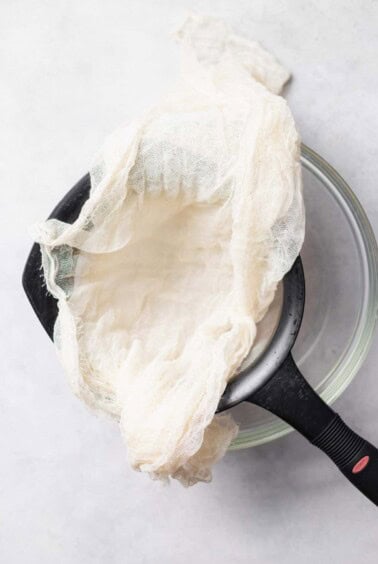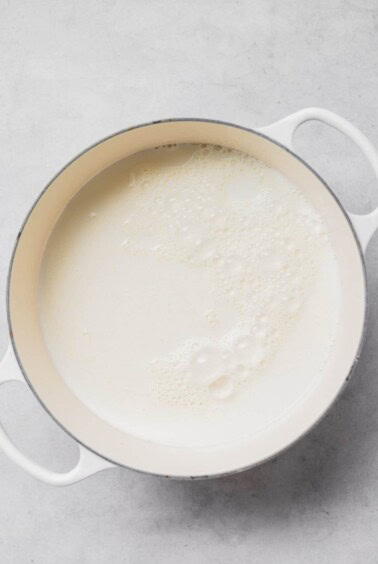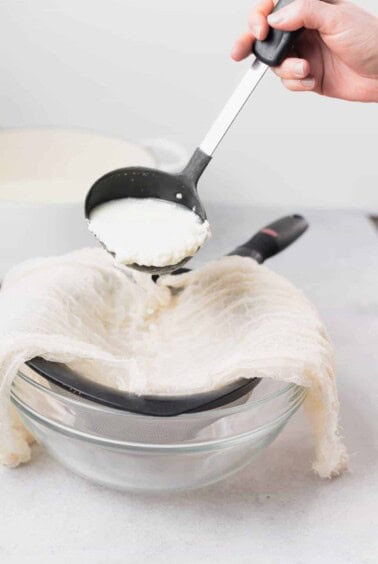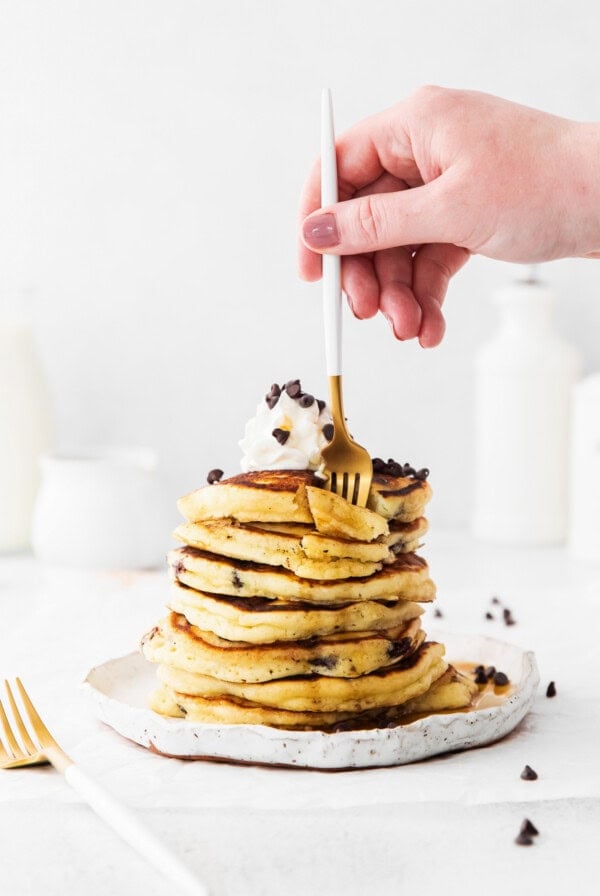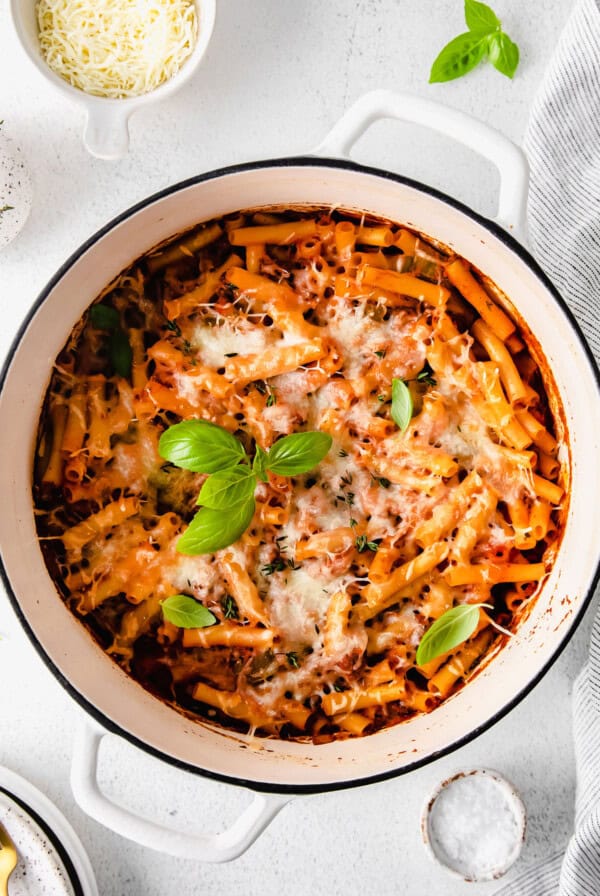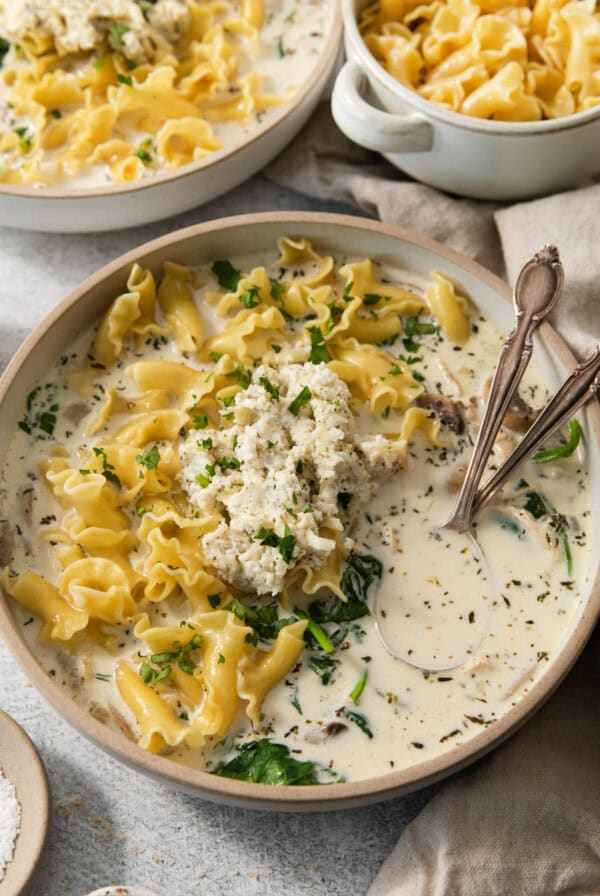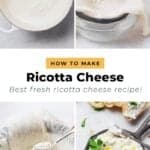How to Make Ricotta Cheese
9/9/2023
This post may contain affiliate links. Please read our disclosure policy.
Homemade ricotta cheese is a brilliant way for anyone to begin their journey into home cheesemaking. The magic of turning fresh milk and cream into delicate curds and whey is deeply satisfying and deliciously simple!
In this post we’ll teach you all about ricotta including how to make ricotta cheese and how to use it!
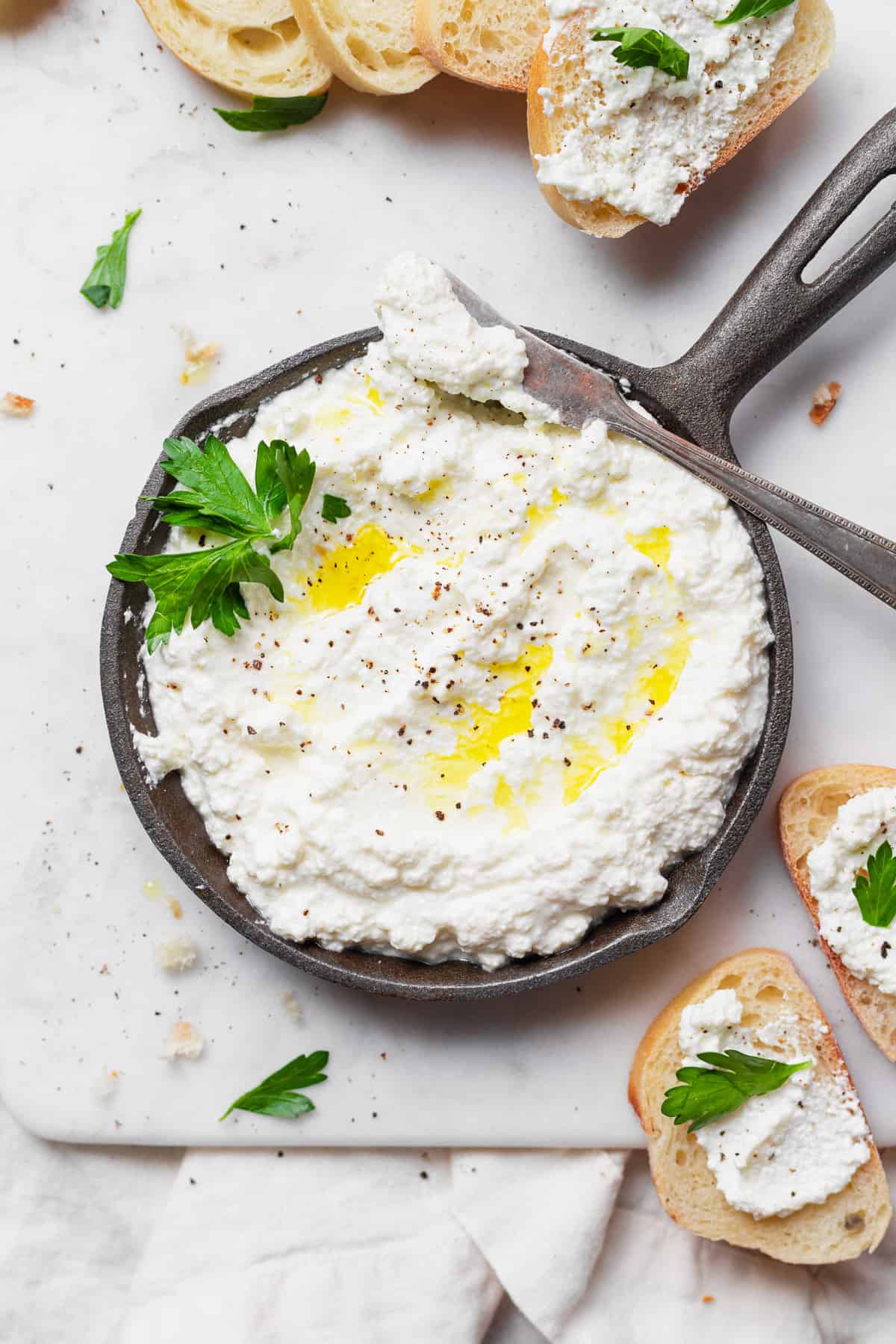
Cheesemaking in your own home may sound and look intimidating, but we’re here to tell you otherwise. Erin Harris, a professionally trained chef and cheese monger AKA The Cheese Poet, is here to share all of her expert knowledge on ricotta cheese.
Whether you’re planning to eat your homemade ricotta cheese recipe as a dip or spread or cook with it (hello ricotta gnocchi!), this post is going to teach you all about ricotta cheese and how to make it in your own home!
What is Ricotta Cheese?
Ricotta is an Italian name for a pillowy soft, fresh cheese that is traditionally made from the leftover whey from cheesemaking and literally translates to mean ‘re-cooked’.
The process of heating whey to a specific temperature and adding some acidity allows for additional curd to be pulled from the whey after the initial cheesemaking process. Our ricotta cheese recipe uses the same technique but with fresh milk and cream, which yields more curd while using common ingredients.
You can use the leftover whey from any style of cheese to make Ricotta, and if you happen to have access to a large amount of whey, then you can make Ricotta the old-fashioned way (whey?!).
What is ricotta cheese used for?
Ricotta is an important ingredient in the Italian kitchen, and can be found in many recipes as the base for a filling or topping for:
- pasta
- pizza
- desserts like cannoli and ricotta pie
Ricotta is best used when very fresh and is not intended to be aged. If you cannot use your ricotta within a week, it can be kept frozen for up to a month in a well-sealed container.
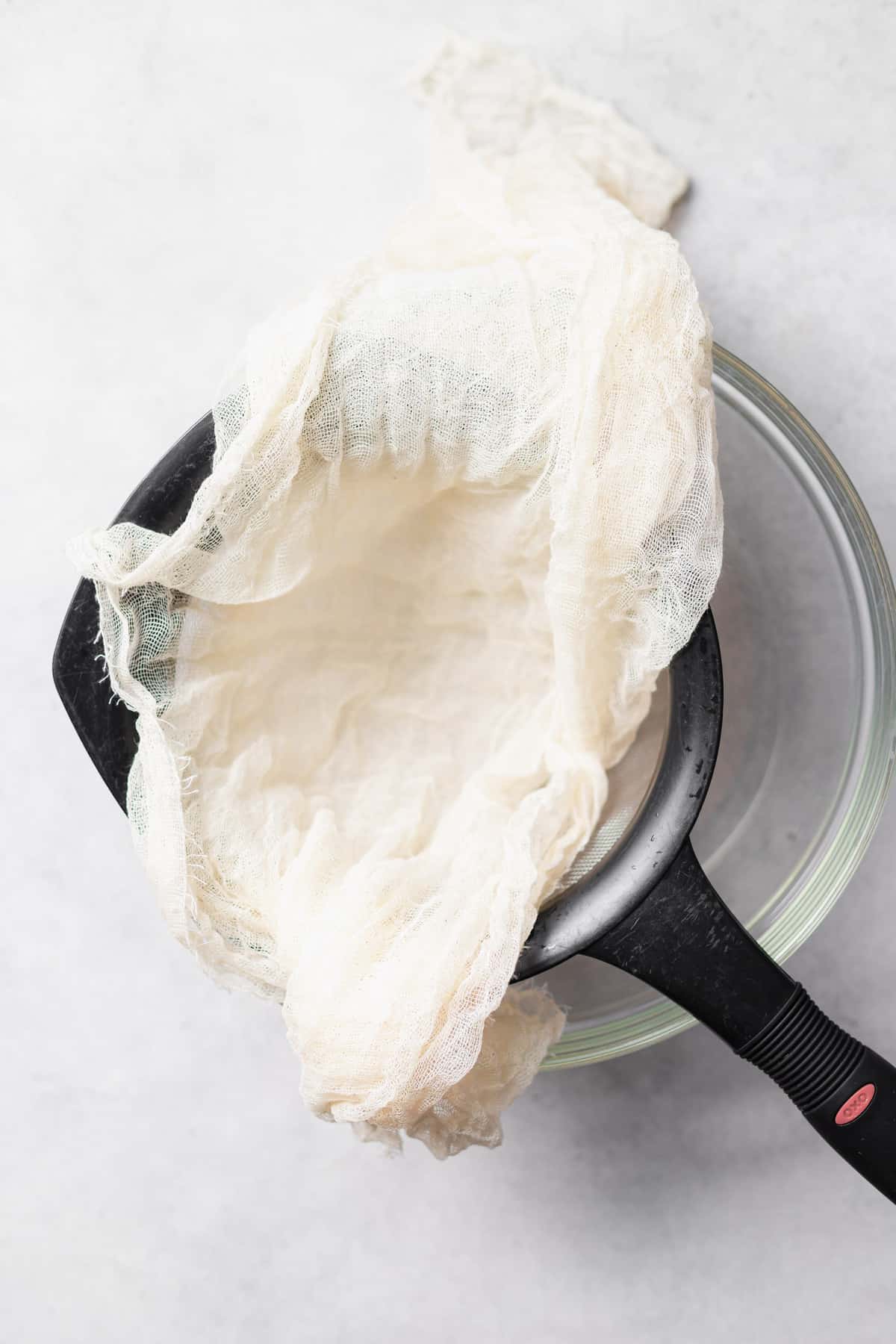
Ingredients for Homemade Ricotta Cheese
All you need are 4 basic ingredients to get started! Check it out:
- whole milk – 3.25% fat
- whipping cream – 35% fat
- white vinegar
- kosher salt
Like we mentioned above, cow’s milk is not the only milk you can make ricotta cheese from. Just make sure that it’s fresh and not ultra-pasteurized (UHT).
What kind of milk can you make ricotta cheese from?
Ricotta can be made with the milk from:
- cows
- sheep
- goat
- water buffalo
- or a mixture of milks!
fresh fresh fresh!
Whichever milk you choose, it should be very fresh and not ultra-pasteurized (UHT), which you can determine by reading the label on your milk.
Ultra-pasteurized milk will not allow for proper curd formation. The most important aspect to making great cheese is to start with fresh ingredients and clean equipment.
Equipment You Need for Homemade Ricotta
For this homemade Ricotta cheese recipe, you will need the following equipment:
- Cheesecloth – cheesecloth is used to help separate the whey from the curd.
- Non-reactive colander – a colander is used in conjunction with the cheesecloth to separate the why from the curd.
- Non-reactive bowl – your colander needs something to rest in and that something is a bowl. Just make sure it’s bigger than your colander.
- Non-reactive heavy bottom saucepan – you’ll need a saucepan that is big enough to hold all of the milk and cream.
- Ladle – a ladle is used to spoon the curd and whey from the saucepan to the colander.
- Wooden Spoon – use a wooden spoon to stir ingredients together as it heats up.
- Thermometer – a thermometer is a must for this ricotta recipe. It needs to reach 192ºF before turning off the heat to rest.
What does nonreactive mean: ‘nonreactive’ is referring to cookware that does not react to acidity. Stainless steel is an example of non-reactive cookware.
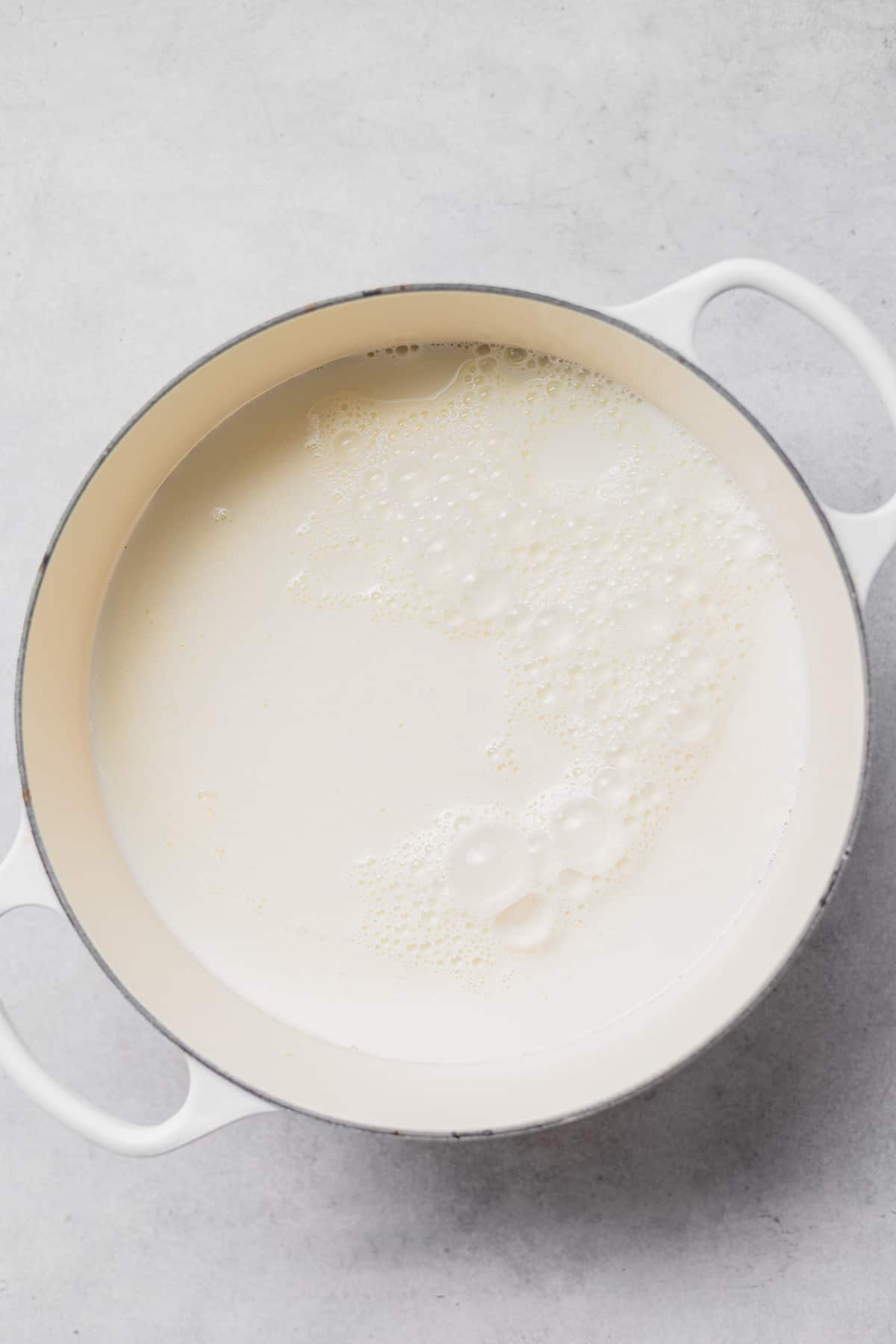
How to Make Ricotta Cheese
- Prepare colander: First, prepare your colander by placing it into a large bowl. Then, fold your cheesecloth over itself 3 or 4 times and run it under water. Then, ring it out and set it in the bowl making sure it’s covering the whole thing.
- Heat ingredients: Add all your ingredients to your pot and slowly heat over medium heat untik it reaches 192ºF. This is where your thermometer comes in handy. Turn off the heat and then cover. Let rest for 15 minutes.
- Drain: Ladle ricotta (the whey and curd) into your cheesecloth-lined colander to drain.
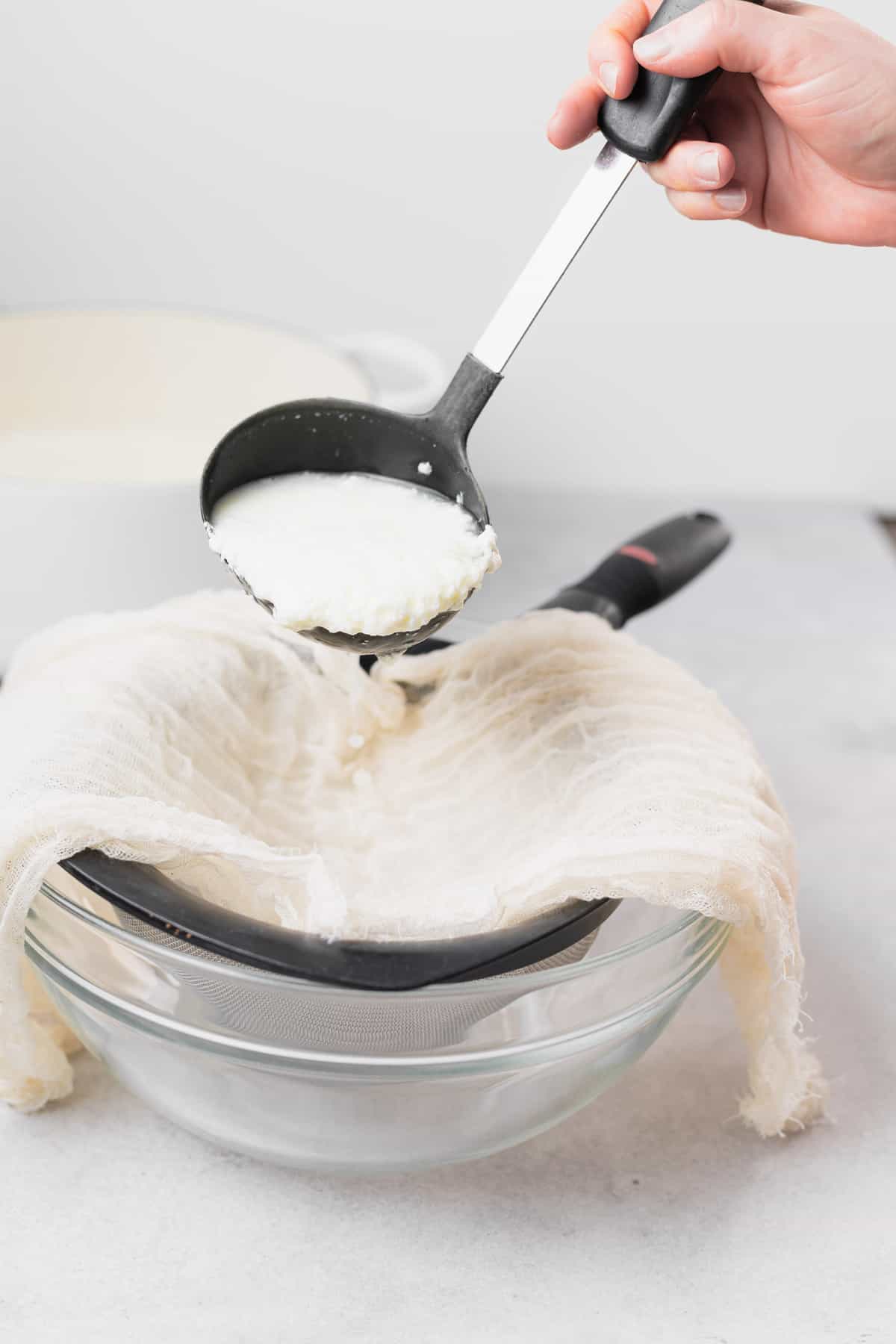
FAQ
Fresh Ricotta is a healthy cheese that is naturally low in salt (unless you add more!) and can be made without cream if you are limiting fat intake. If you remove the cream from this recipe, the yield will be slightly less (about 2 cups instead of 2.5) and the finished ricotta will be less creamy.
While Ricotta and cottage cheese are not the same, ricotta can often be used in place of cottage cheese in many recipes like Lasagna and pancakes. Ricotta typically has a smoother, finer curd than that of cottage cheese, although they are similar in taste.
If you are looking for a substitute for ricotta, cream cheese can be used as a suitable replacement in recipes like filled pasta and pastries. You can also try using cottage cheese in place of ricotta in recipes like lasagna and pancake.
Homemade Ricotta Cheese Variations
Replace the white vinegar with an equal amount of freshly squeezed lemon juice. Add up to 1 tbsp more if needed (the acidity of lemons can vary).
Stir in ¼ cup of whipping cream to the final ricotta for a richer, creamier spread.
What to do with Leftover Whey
Leftover whey can be used to make bread, soups, cocktails, and even more ricotta (though, it takes a lot of whey to make a little ricotta!)
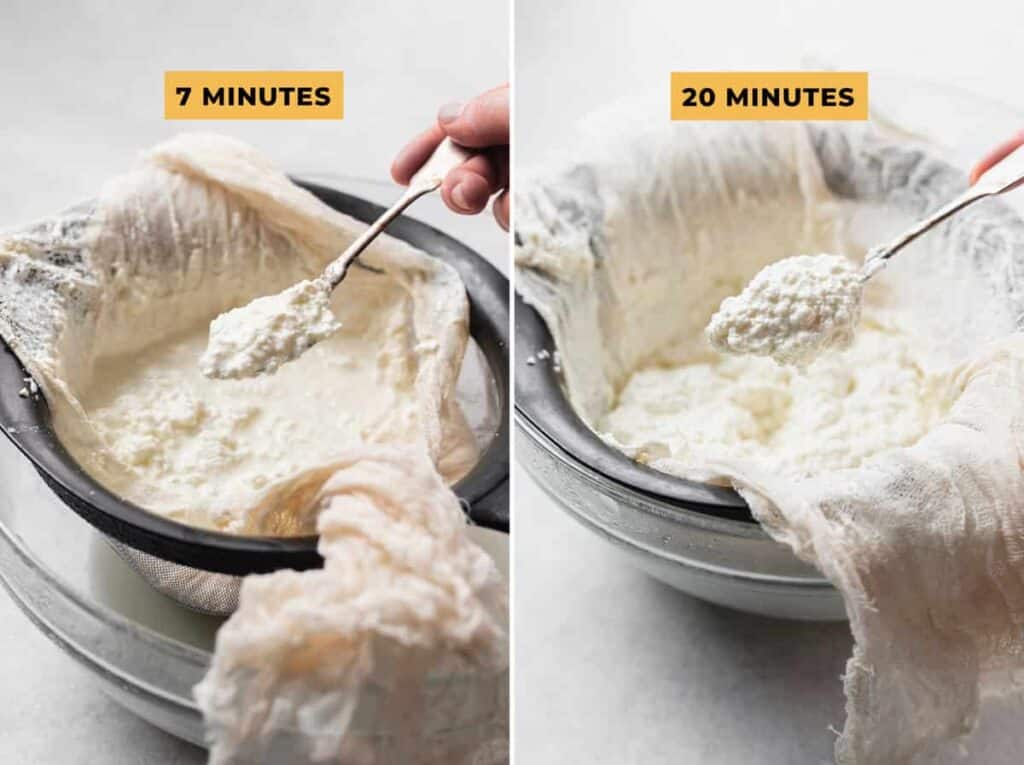
Storage
Store homemade ricotta cheese in an airtight container in the refrigerator for up to 7 days. Fresh ricotta is not intended to be aged and will turn sour after about a week’s time.
Can you freeze ricotta cheese?
Ricotta can be frozen for up to 1 month. Transfer it into an airtight container and seal. Place in the freezer for 30 days.
To thaw: place in the refrigerator overnight.
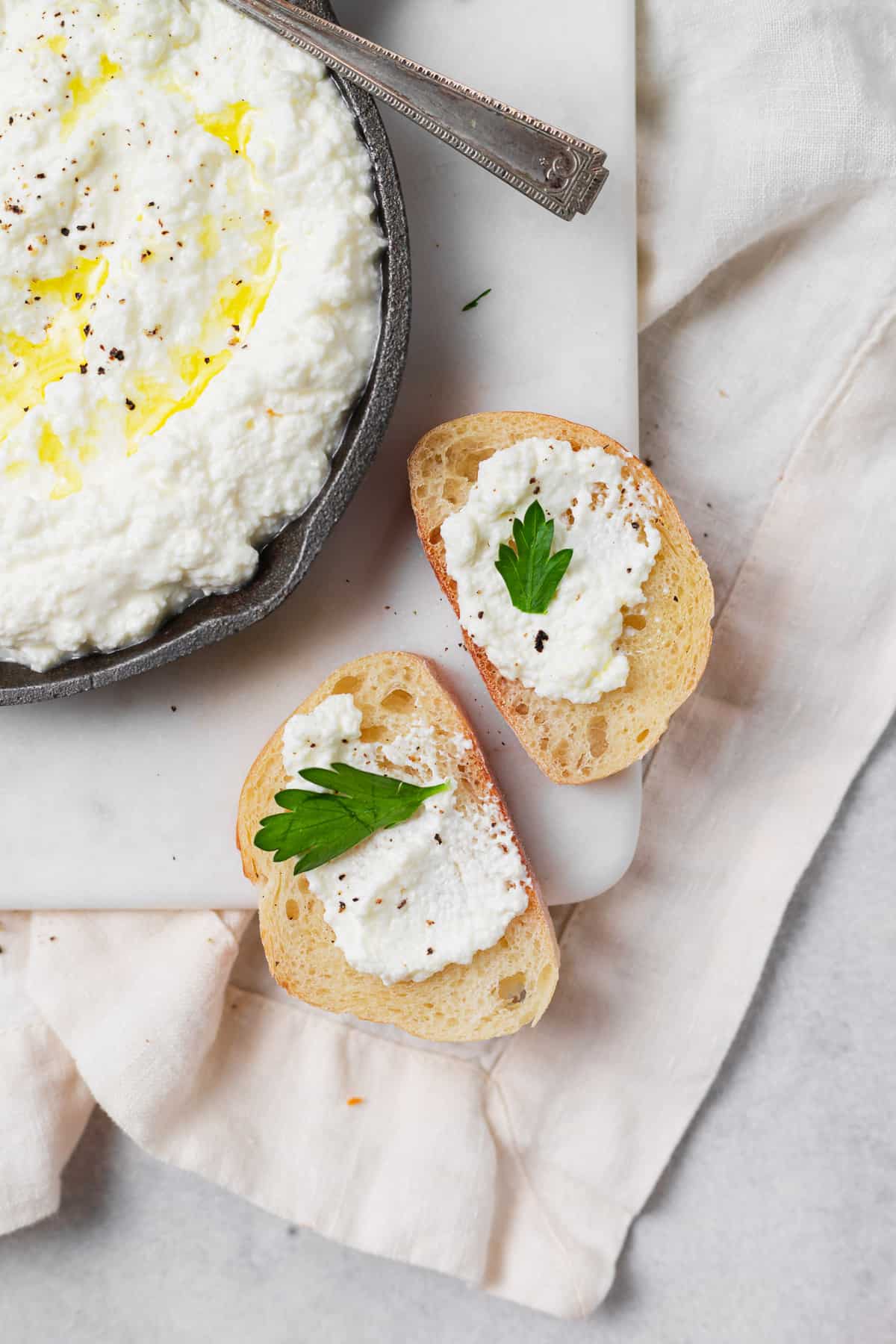
How to Serve Ricotta Cheese
One of the simplest ways to enjoy freshly made, still warm homemade Ricotta cheese, is by drizzling it with really great olive oil and a fresh cracking of black pepper, and liberally smear it on your favorite bread, cracker, or fresh vegetables.
If you happen to have a sweet tooth, replace the olive oil with your favorite honey, and enjoy with fresh fruit like figs, strawberries, and pear slices.
How to Make Ricotta Cheese

Ingredients
- 1/2 gallon whole milk, 3.25% fat (make sure it’s fresh and not ultra-pasteurized, UHT)*
- ½ cup whipping cream, 35% fat
- 3 tablespoons white vinegar
- ½ teaspoon kosher salt
Instructions
- First, prepare your colander by lining it with cheesecloth. Fold the cheesecloth over itself 3 or 4 times, using a piece of cloth large enough to completely cover the colander with some overhang. Wet the cheesecloth and wring it out, and then place it over the colander in the bowl. Set aside.

- Add all of the milk, cream, and salt to the saucepan and slowly heat the mixture over medium heat to 192 degrees F (88 degrees C) – this should take 15-20 minutes. Stir occasionally to make sure the milk does not scorch. Remove the saucepan from the heat, and stir in all of the vinegar.

- Cover the pot and allow it to rest for 15 minutes.
- Gently ladle the ricotta into the cheesecloth-lined colander. Once all of the curd and whey has been ladled into the colander, allow to drain. The final consistency of the ricotta will depend on how long it drains. For a creamy ricotta, drain for 5-7 minutes. For a drier ricotta, drain for up to 20 minutes.

- Use the ricotta immediately, or transfer to a container and refrigerate for up to a week.
Tips & Notes
- whole milk – make sure you use fresh whole milk. If your milk says ultra-pasteurized (UHT) on the carton, do not use it.
- storage – will last in the refrigerator for up to 1 week.
- freezer instructions – transfer into an airtight container and freeze for up to 1 month. To use, let thaw overnight in the fridge.
- This recipe yields 2.5 cups.
- Homemade ricotta cannot be made with ultra-pasteurized milk, as the curd will not set. Read the label on your milk to make sure it isn’t ultra-pasteurized
- Make sure your homemade ricotta is sufficiently drained for using in baking or as a filling for pasta. Watery ricotta could alter the desired outcome of your recipe
- Wash your cheesecloth well in diluted bleach water, and let it hang to dry. You can reuse cheesecloth many times!
- The longer you let your ricotta cheese strain, the drier it will be. Drier ricotta is great for baking (you’ll notice that a lot of baking recipes require you to strain before baking) and the less you strain, the more creamy it will be.
Nutrition
Nutrition information is automatically calculated, so should only be used as an approximation.
Don’t forget to tag your posts on social media with the hashtag #cheeseknees, we’d love to see what you’re up to!
